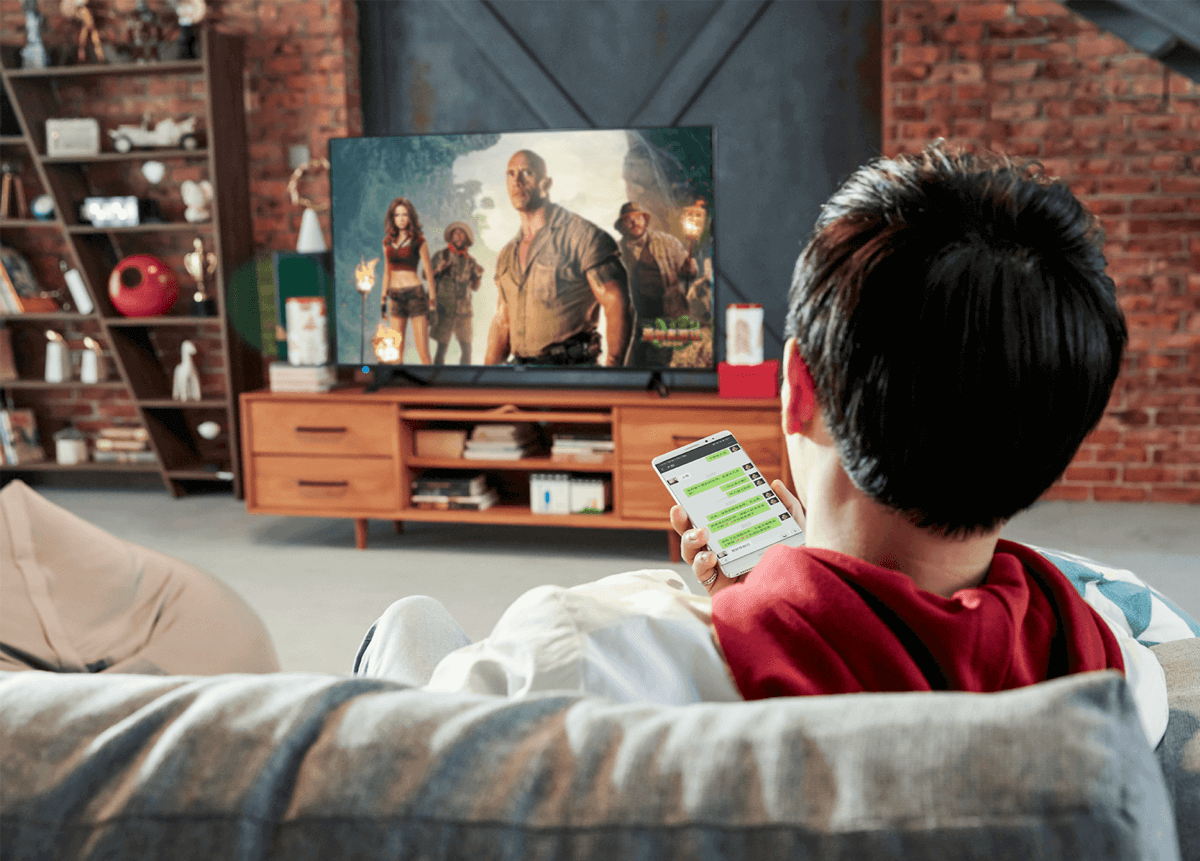Mobile Phone Screen Sharing: Your On-the-Go Interactive Hub in the Classroom
With smartphones now a standard for both teachers and students, combining a phone’s screen with a projection device is turning this “pocket-sized device” into a powerful classroom tool. Its real-time and flexible nature breaks the limitations of traditional teaching scenarios.
Instant Capture: Bringing Details Up Close
A mobile phone’s portability combined with the high-definition transmission of screen-sharing devices makes presenting classroom details more precise.
In a biology class, a teacher can use their phone’s macro lens to focus on a specimen slide. By projecting it onto the main screen, the entire class can clearly see cell structures that would otherwise require them to crowd around a microscope. During an art appreciation class, a teacher can project a close-up of a painting’s brushstrokes, showcasing the layers of paint and the changes in line direction more vividly than a physical display. This “snap-and-project” model extends the teaching perspective from the podium to every small detail.
Flexible Display: Resources at Your Fingertips
The vast amount of educational resources stored on a mobile phone can be “called up and projected” instantly, enriching classroom content.
When explaining a text about local culture in a language arts class, a teacher can project photos of local ancient buildings from their phone to help students connect with the text. For a listening exercise in an English class, the teacher can project an audio file directly from their phone, pausing it at any time to highlight key words and sentences without needing to switch to a computer. Students can also use their phones to share what they’ve learned. In a history class, they can project screenshots of historical materials they’ve organized to supplement the lesson. In a math class, they can project photos of their rough work to quickly show their thought process.
Efficient Interaction: Making the Classroom Come Alive
Mobile phone screen sharing transforms classroom interaction from “one-way output” to a “two-way flow.”
When asking a question, a student can send their answer to the teacher’s device, who can then select and project a typical response for discussion, avoiding the pressure of raising a hand. After a group discussion, each group can take a photo of their whiteboard or mind map with their phone and project it to the main screen for comparison and real-time feedback. Even during an outdoor field trip, students can use their phones to instantly share photos of an experiment or their observations to the class screen, seamlessly connecting “off-site observation” with “in-class interaction.”
From capturing details and accessing resources to facilitating interaction, pairing mobile phones with screen-sharing devices completely changes the phone’s role from a “tool for entertainment” to an on-the-go teaching assistant for both teachers and students, injecting more flexible and dynamic energy into the classroom.